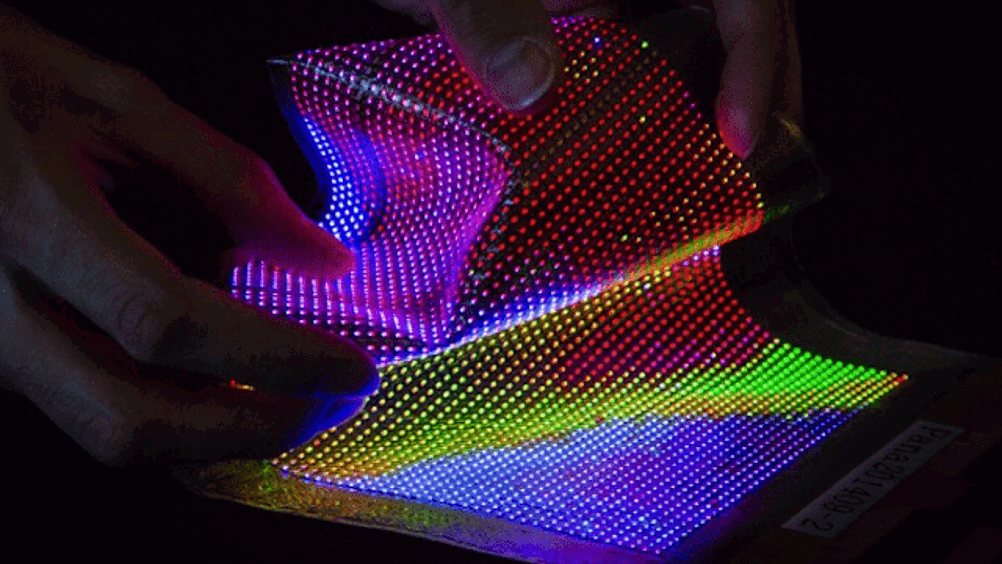Researchers turn clothes into electronic displays
Researchers have demonstrated the world’s first stretchable and conformable thin-film transistor driven LED display laminated into textiles, an advance that paves the way to wearable displays in clothing providing users with feedback.

The breakthrough has been made by researchers from the Holland’s Holst Centre, Belgium headquartered imec, and CMST, imec’s associated lab at Ghent University.
Wearable devices such as healthcare monitors and activity trackers are quite common, but to date they haven’t been integrated into clothing. Doing so will make wearable devices less obtrusive and more comfortable, encouraging people to use them more regularly and increase the quality of data collected. A key step towards realising wearable devices in clothing is creating displays that can be integrated into textiles to allow interaction with the wearer.
“Wearable devices allow people to monitor their fitness and health so they can live full and active lives for longer. But to maximise the benefits wearables can offer, they need to be able to provide feedback on what users are doing as well as measuring it. By combining imec’s patented stretch technology with our expertise in active-matrix backplanes and integrating electronics into fabrics, we’ve taken a giant step towards that possibility,” said Edsger Smits, senior research scientist at Holst Centre.
Register now to continue reading
Thanks for visiting The Engineer. You’ve now reached your monthly limit of news stories. Register for free to unlock unlimited access to all of our news coverage, as well as premium content including opinion, in-depth features and special reports.
Benefits of registering
-
In-depth insights and coverage of key emerging trends
-
Unrestricted access to special reports throughout the year
-
Daily technology news delivered straight to your inbox










UK Enters ‘Golden Age of Nuclear’
The delay (nearly 8 years) in getting approval for the Rolls-Royce SMR is most worrying. Signifies a torpid and expensive system that is quite onerous...